#california dishes
Video
🌟 Get ready to explore the mouthwatering flavors of California! Join us on a culinary journey through the state's famous foods and dishes! From juicy burgers to delectable seafood and everything in between, discover the irresistible tastes that define California cuisine! 🍔🌮🍤 Subscribe to Hidden Gems for more foodie adventures. #CaliforniaCuisine #FoodieAdventures #HiddenGems #FoodExploration #TasteofCalifornia #FoodieFinds #CaliforniaEats #FoodDiscovery #shorts #shortvideo #trendingshorts #trending #california #viral #reels
#shorts#best ever food in california#trending#trending shorts#viral#reel#california#usa#us#states#food#dishes#famous food#short video#california dishes#california food#best california dishes#best california food#california dishes recipes#california food recipes#top 10 california dishes#top 10 california foods#food in california#best american food#american cuisine#best american dishes#street food#street food in california#american street food#cooking
0 notes
Text
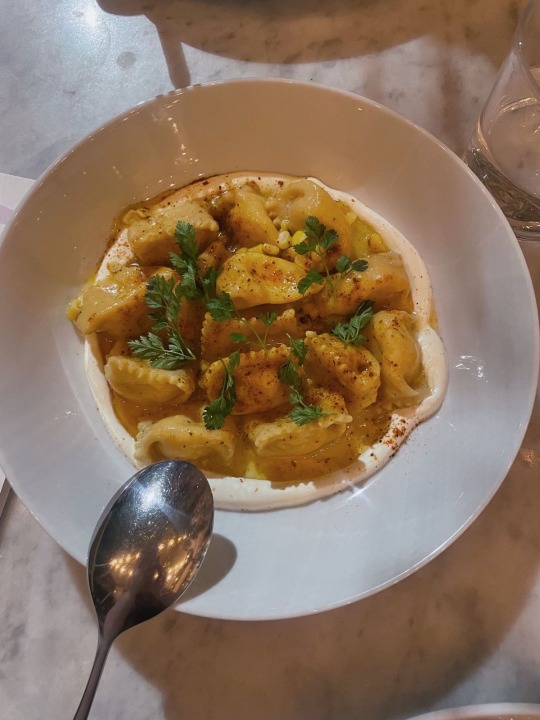
#rosecoloredsunsets#eternal california#eternalcalifornia#mine#california#aesthetic#beachside#los angeles#beach#nature#pasta#pastalovers#pastamonsters#pasta dish#cento#cento la#sweet corn#sweet corn agnolotti#delicious
96 notes
·
View notes
Text
Morihiro
Went to a one-star Michelin sushi place the other night for an Omakase experience, $800 for the two of us. We are both experienced chefs, so we rarely get to eat food as nice as we serve but.....half the dishes objectively SUCKED, like....really really bad. We laughed about it, but I'm so sad that amount of money was spent 🥲😭 LA fuckin blows. We both agreed even if it was half the price we would never go back. The sashimi, soy sauce, and Wasabi were notably good, but it didn't make up for the rest or price tag.
(Next day, we both had tummy problems, but that could have been just the outrageous amount of fish and fermented items.)

#also got charged for a bottle when i only had a glass#the dishes actually pissed me off#i felt like the chef was making fun of me for serving me such garbage#insaaaaane#sushi#los angeles#food#chefs#chef#bad sushi#bad food#la food#la#california#omakase#michelin star#restaurant#review#expensive#sad#personal#text#rant#mine#los angeles food#should have been 1/4 the price for real
11 notes
·
View notes
Text
Daily News Recap from Natalie at Life After A Cult: Scientology Protests
This group has shown unequivocally how non-violent and non-performative protesting can be extremely effective. The Progressives are LYING through their teeth, in their defense of troublemakers on college campuses right now. The whole idea has been to radicalize kids here, just as was done in South America. Acting on Socialist Marxist principles (proverbially elite-funded, for decades) necessitates becoming a criminal. If none of the chaos agents are held accountable for their actions, the entire Leftist ecosystem will just keep getting more dangerous, virtually becoming the twin to Far Right and sticking Americans in the middle of their forever revolutions.
Get a clue. Don't fall for this bullshit. I want Israeli influence out of my country too. This isn't how you do it. They're just handing the Right more ammunition. The absolute fucking privilege.
#SCIENTOLOGY NEWS RECAP WITH LIFE AFTER A CULT NATALIE#FEATURING MORE TOM CRUISE DISHING#LARA FM LEARNING AND LOVING REMIX#SCIENTOLOGY PROTESTERS SHOWING HOW IT'S DONE#VS#PRIVILEGED FUCKERS AT ELITE UNIVERSITIES#COLUMBIA UNIVERSITY#NYU#UCLA#PRAGER U#JOHNS HOPKINS IS LOUSY#FREE PALESTINE#PROGRESSIVES#RADICALIZING YOUR KIDS WHILE GETTING FUCK ALL DONE#California#Texas#New York#Tom Cruise#Regressive Progressives#THROWING RED MEAT TO THE FAR RIGHT#ABC#NBC#CBS#CNN
3 notes
·
View notes
Text
God these lesbians are fucking useless
#I’m reading a book that I got for free where nearly every single women in Australia is a lesbian#/j but fr I think only three of the female characters in this book are straight or not labeled as anything#those characters being the mc sister in law niece and homophobic mother#n e way the main cast is incredibly useless#(affectionate)#also I feel like this was made up as the author went bc istg there was no real mention of them being in Australia till like at least halfwa#thru the book#I mean#the one coworker guy said mate pretty early on#but I kinda just assumed he was British or Australian???#i fr thought they were in like California or like San Francisco or something for long ass time#also these mf eat SO much for every meal like dawg#like istg like seven different dishes per meal at least#wild shit fr
4 notes
·
View notes
Text

they got indian food for dinner!
#why is this exciting information you ask? just cuz#also the restaurant is called 'india odisha' which is funny because odisha is a state#like naming a restaurant usa california it's a bit odd haha#so is this an odisha specialty restaurant? what could it be? i know like two odishi dishes and neither of them are take away kind of food#911 fox
9 notes
·
View notes
Photo


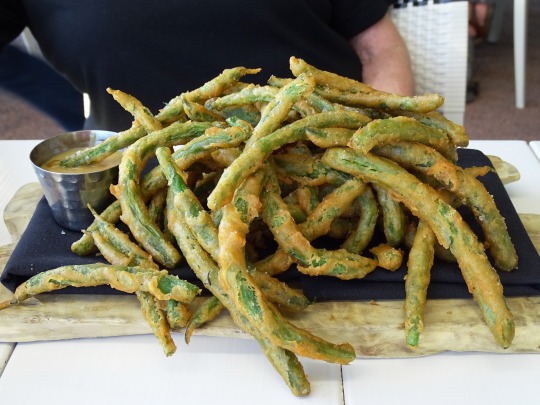

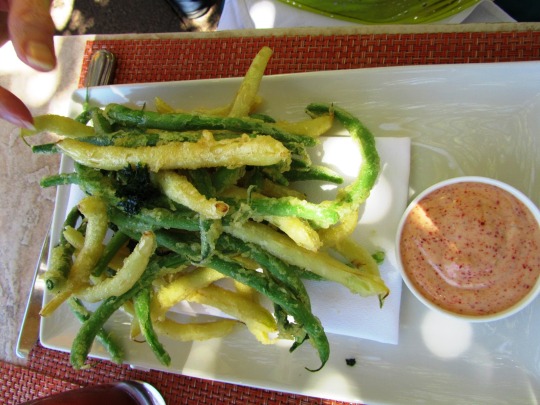

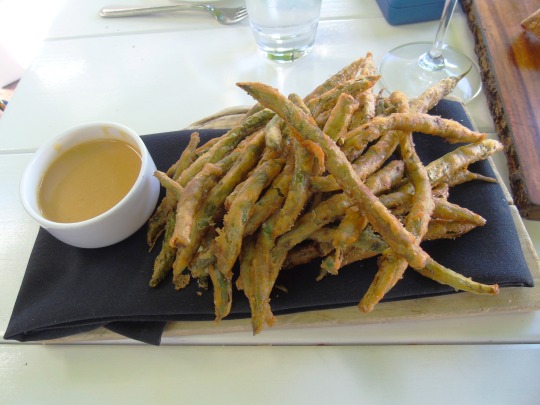

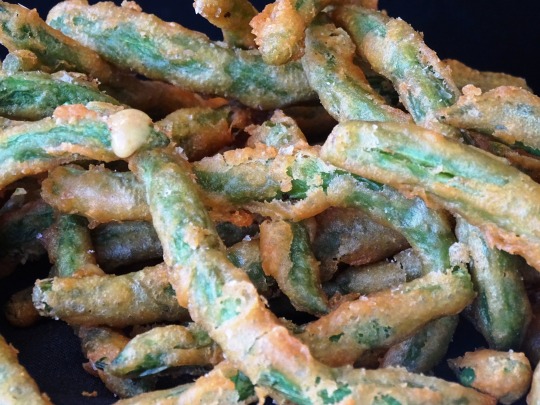

National Tempura Day
Batter and deep-fry a wide range of foods, from prawns to vegetables, and pair with Japanese staples like donburi or soba for some delicious dining.
Tempura is a deep-fried dish that the Japanese have made for centuries. When did it originate? Let us find out through the history of National Tempura Day!
Learn about National Tempura Day
On National Tempura Day, we are encouraged to enjoy any sort of dish that has been made with tempura batter. This is a Japanese fare, with most people tucking into delicious Tempura prawns on this date! However, there are many things you can deep-fry in this batter. Seafood and vegetables are the most popular, yet there’s nothing stopping you from having Tempura chicken. We are sure that there are plenty of unique concoctions you can come up with as well. Deep-fried Mars bars are popular, so what about a Tempura version?
Tempura is a traditional Japanese dish. It was introduced in the 16th century by the Portuguese that were living in Nagasaki at the time. They used fritter-cooking to achieve the light batter. The batter typically consists of soft wheat flour, for example, all-purpose flour, pastry flour, or cake flour, which is combined with iced water. Some people prefer to use sparkling water to keep the batter light.
A lot of people will also add spices, oil, starch, baking powder or baking soda, and/or eggs, especially the egg yolk. Traditionally, this batter is mixed in small batches. Chopsticks are used to mix the batter, and it is only mixed minimally, i.e. for a few seconds. Any lumps are left in the mixture, and this – along with the cold temperature – is how the crisp and unique fluffy tempura structure is created when cooking.
Cooked tempura pieces tend to be either salted and eaten as they are or they are presented with a dipping sauce. Tentsuyu sauce is the most common sauce to enjoy with this batter. A lot of people serve it with grated daikon, which is a mild-flavored winter radish, and they eat it straight after it has been fried. You will also find that tempura is typically found in udon soup or bowls of soba in Japan, typically in the form of a fritter, shiso leaf, or shrimp.
It is also not uncommon for tempura to be used in combination with other foods. So, if you want to cook a tempura-inspired meal for National Tempura Day, there are plenty of main dishes for you to consider. As mentioned, you can add tempura to the top of udon soup. It is also typically served as part of a donburi dish, which is where vegetables and tempura shrimp are served over a bowl of steamed rice. You could also make a bowl of tempura soba, which is essentially tempura that is served on top of buckwheat noodles. Or, how about making your very own creation?
History of National Tempura Day
Tempura is made up of either seafood or vegetables that are battered, deep-fried, and enjoyed by millions of people across the nation. Portuguese Jesuit missionaries introduced the recipe for tempura to Japan during the sixteenth century (around 1549). It is believed that Portuguese Jesuit Tokugawa Isyasu, founder and first shogun of the Tokugawa shogunate of Japan, loved tempura. Since the Genroku era (September 1688 – March 1704) tempura was originally a very popular food that was eaten at street vendors called yatai.
Today, chefs all over the world include tempura dishes on their menus using a wide variety of different batters and ingredients including the non-traditional broccoli, zucchini, and asparagus as well as dry fruits. Some meats, usually chicken and cheeses, are known to be served tempura-style in some American restaurants. For sushi lovers, a more recent variation of tempura sushi has the entire piece of sushi dipped in batter and tempura-fried. The word “tempura” comes from the word “tempora”, a Latin word meaning “times”, “time period” used by both Spanish and Portuguese missionaries to refer to the Lenten period or Ember Days.
The idea that the word “tempura” may have been derived from the Portuguese noun tempero, meaning a condiment or seasoning of any kind, or from the verb temperar, meaning “to season” has not been substantiated. The term “tempura” is thought to have gained popularity in southern Japan; it became widely used to refer to any sort of food prepared using hot oil, including some already existing Japanese foods. Today, the word “tempura” is also commonly used to refer to satsuma age, a fried fish cake that is made without batter. In Bangladesh, the blossoms of pumpkins or marrows are often deep-fried with a gram of rice flour spice mix, creating a Bengali style tempura known as kumro ful bhaja.
How to celebrate National Tempura Day
Celebrating National Tempura Day is easy. You gather up the ingredients necessary to create a tempura, be it a homemade recipe or one you found online, and make the dish to serve it with family as a happy dinner meal. You could decide to have tempura prawns or starter or you could opt for a main dish that incorporates tempura, such as the ones we mentioned earlier.
The great thing about this batter is that it is highly versatile and so it can be teamed with a wide range of seafood, vegetables, and meat. This means that you can have a lot of fun experimenting with different ingredients. Why not have a tempura cook-off with your friends? Or, you could host a Japanese-inspired dinner party?
Why not get some of your friends around for afternoon tea Japanese style? In Japan, tea ceremonies have been popular for many years. Combine this with some delicious tempura dishes for everyone to eat, and you’ve got the perfect lunch-time event. After all, it is always fun to do something a bit different, isn’t it?
The tea that is famous in Japan is pure Matcha green tea. We’re sure you may have even seen Matcha tea or Matcha lattes in your local coffee shop! Matcha comes in many different forms and grades. It is important to be aware of this when purchasing, as you don’t want to end up selecting the wrong product. Generally speaking, you have two key options to select from when buying Matcha – ceremonial Matcha and cooking grade Matchas.
Most people prefer to invest in ceremonial Matcha green tea, and this is because it is of the highest quality and it is suitable for everyday drinking. Of course, you can incorporate it into cooking too, but when creating a Matcha beverage it is even more important to choose high levels of quality. You won’t get better than ceremonial Matcha and this is emphasised by the fact that this Matcha is used in the traditional Japanese tea ceremonies. This type of Matcha should be powdery, very fine, and boast a bright spring green shade.
If it has a slightly yellow colour and feels coarse, you definitely do not have ceremonial grade Matcha on your hands. Ceremonial Matcha is also delicious enough to be enjoyed on its own. You can simply mix it with hot water and consume it as it is; it does not need any sweeteners or additions. Another point worth bearing in mind is that you only need about half a teaspoon of ceremonial grade Matcha when making a cup of tea. You will need more than this when using a lower grade of Matcha. Therefore, while ceremonial Matcha may be more expensive to buy initially, it will last you a lot longer, and thus the costs even themselves out.
No matter whether you are going to host a traditional Japanese tea ceremony with your friends or an evening of fine dining, you will need to decide what tempura dishes you are going to create. The great news is that there are so many different options for you to choose from!
Let’s go through some of the most popular. If you’re looking for a veggie dish, eggplant tempura is a great choice. This is known as Nasu. Or, how about Ebi? This is shrimp tempura, and it is delicious! It is typically used as a topping for udon or soba noodles, yet it can also be enjoyed on its own. Don’t confuse this with Ebi Furai; this is another type of fish, yet it is deep fried with panko batter, which is a lot heavier.
Some other options include tempura shiitake mushrooms, Ika, which is squid tempura, and Hotate, which is tempura scallops. If you are feeling really adventurous, you may want to consider Anago, which is salt-water eel. They have a sweet taste and a soft texture.
Source
#Tempura Fried Green Beans#Brix Restaurant & Gardens#California#Toronto#Deep Fried Garlic and Beef#Yountville#signature dish#appetizer#USA#Canada#original photography#Ginger Fried Chicken#National Tempura Day#7 Janaury#NationalTempuraDay#food#travel#vacation#national day
9 notes
·
View notes
Text

Metlox Poppy Trail dish pattern, "provincial California." 1950s
1 note
·
View note
Photo
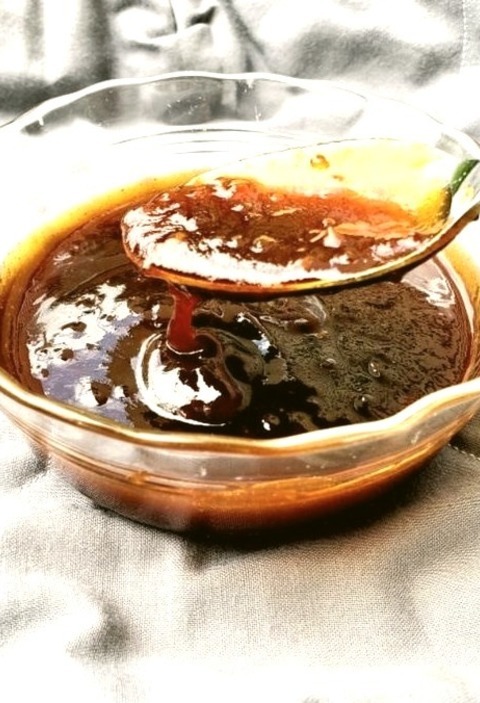
Paul's Southern California BBQ Sauce Recipe
Fire up the grill, and get cookin! This sweet, tangy sauce is perfect on everything! 1 teaspoon dry mustard, 1 cup brown sugar, 1 teaspoon cayenne pepper, 2 tablespoons finely chopped onion, 1 teaspoon chili powder, 1 clove garlic peeled and minced, 1 teaspoon seasoning salt, 1/4 cup ketchup, 2 cups apple cider vinegar
0 notes
Text

#rosecoloredsunsets#eternal california#eternalcalifornia#mine#california#aesthetic#beachside#los angeles#beach#nature#pasta#pastalovers#pasta dish#pastamonsters#cento#cento la#cento Culver City#spicy pomodoro#spicy pomodoro pasta
6 notes
·
View notes
Photo
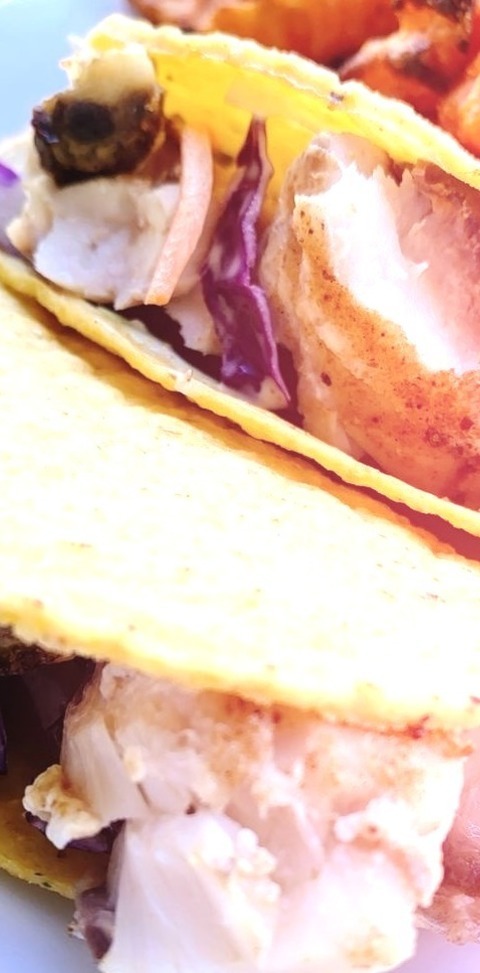
Rockfish Tacos Recipe
With a fresh, crunchy slaw on the side, these tacos of rockfish are seasoned with Old Bay® and ranch dressing.
1 note
·
View note
Text
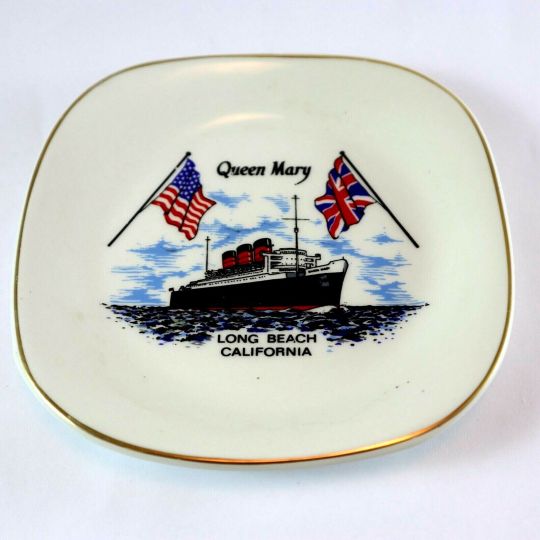
Vintage Ceramic Queen Mary Long Beach California USA Trinket Plate || SWtradepost - eBay
#trinket dish#travel souvenir#cruise ships#cruise ship souvenir#queen mary#california#long beach california#swtradepost#vintage collectibles#vintage ceramics#ebay
0 notes
Text
youtube
Watch the 2024 American Climate Leadership Awards for High School Students now: https://youtu.be/5C-bb9PoRLc
The recording is now available on ecoAmerica's YouTube channel for viewers to be inspired by student climate leaders! Join Aishah-Nyeta Brown & Jerome Foster II and be inspired by student climate leaders as we recognize the High School Student finalists. Watch now to find out which student received the $25,000 grand prize and top recognition!
#ACLA24#ACLA24HighSchoolStudents#youtube#youtube video#climate leaders#climate solutions#climate action#climate and environment#climate#climate change#climate and health#climate blog#climate justice#climate news#weather and climate#environmental news#environment#environmental awareness#environment and health#environmental#environmental issues#environmental education#environmental justice#environmental protection#environmental health#high school students#high school#youth#youth of america#school
17K notes
·
View notes
Photo
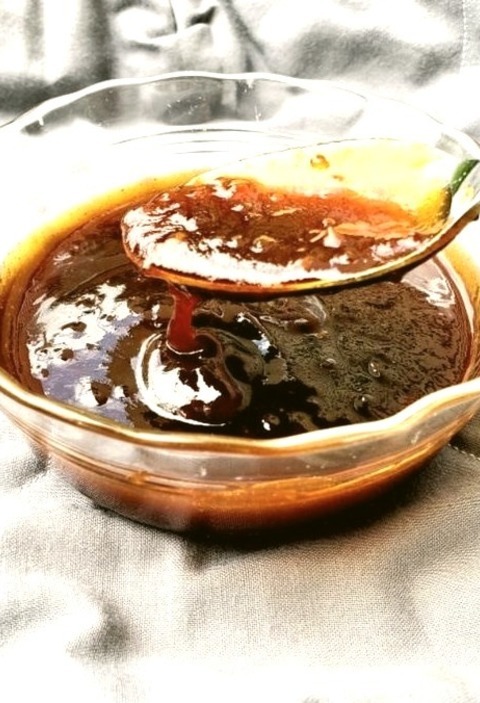
Sauces and Condiments - Paul's Southern California BBQ Sauce
Fire up the grill, and get cookin! This sweet, tangy sauce is perfect on everything!
0 notes
Photo
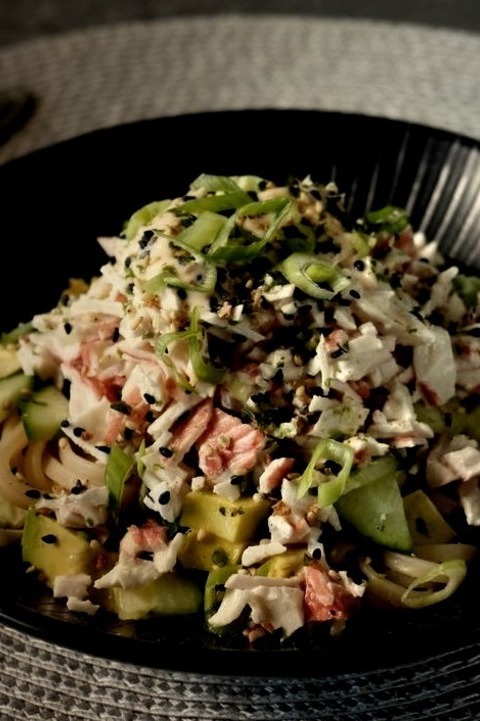
California Roll Rice Noodle Bowl
The popular sushi roll is disassembled in Chef John's California roll rice noodle bowl and turned into a cold, crisp dish with a homemade mayo dressing. 1 avocado - peeled pitted and cubed, 1/2 cup sliced English cucumber, 0.67 cup mayonnaise, 1 teaspoon sliced green onions or to taste, 1 teaspoon Dijon mustard, 2 tablespoons furikake or to taste, 1/4 cup sliced green onions, 1/2 teaspoon sesame oil, 4 ounces dried rice noodles, 2 tablespoons soy sauce, 2 tablespoons prepared mayo dressing base, 6 ounces imitation crabmeat chopped, 1 tablespoon seasoned rice vinegar, 1/2 teaspoon Sriracha, 1/2 teaspoon wasabi paste or to taste, 1/4 cup seasoned rice vinegar
0 notes
Text
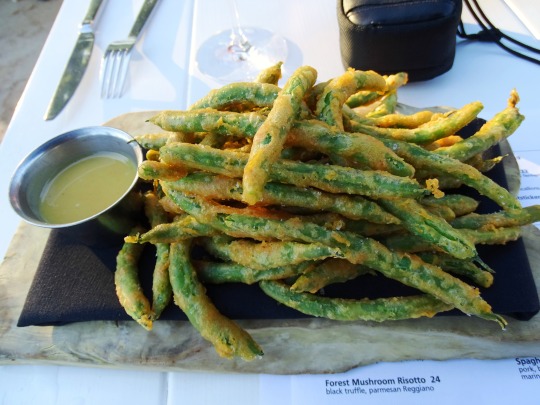
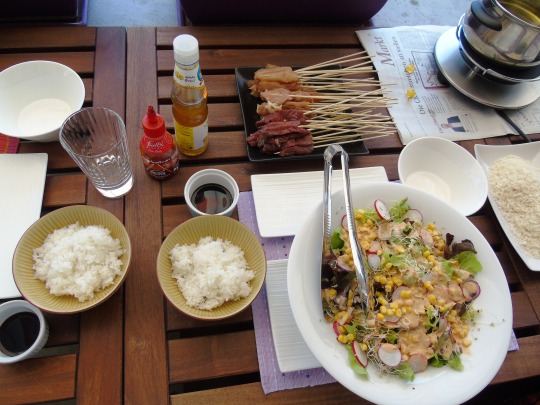




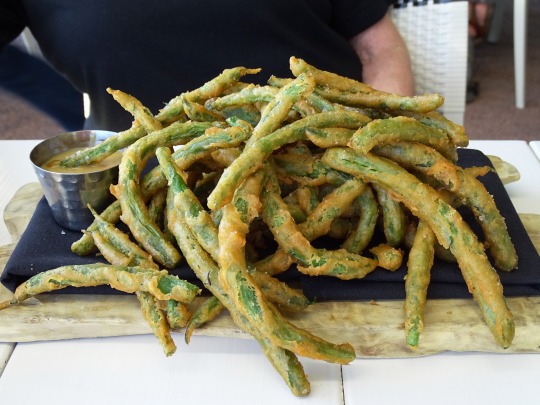
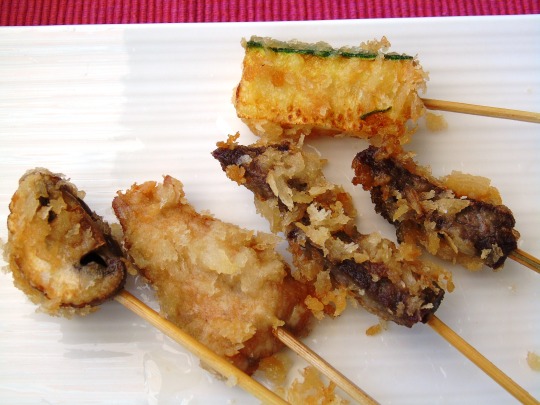
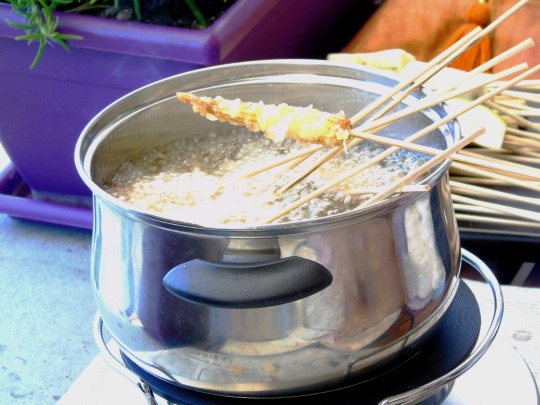
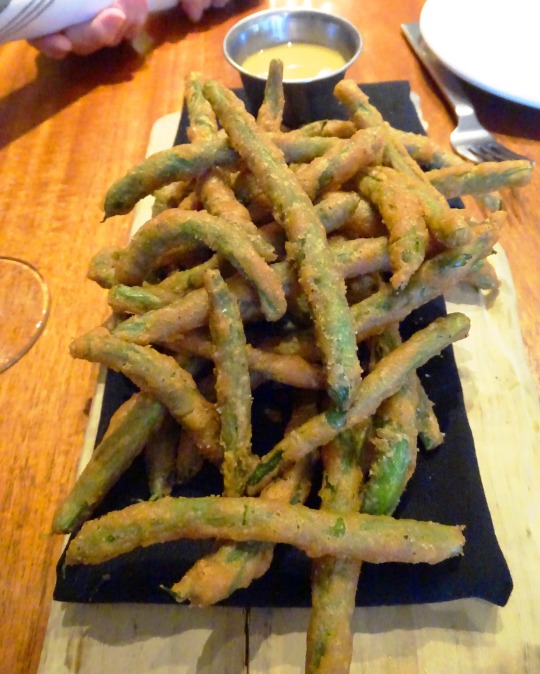
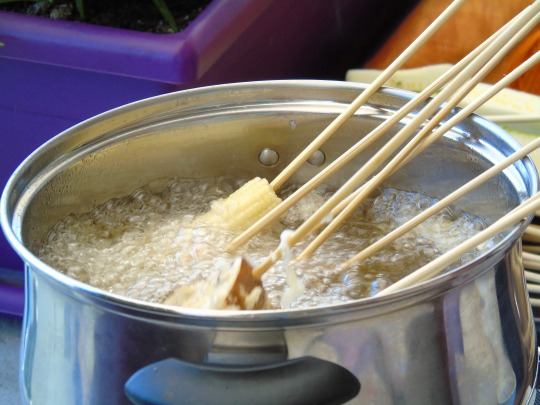
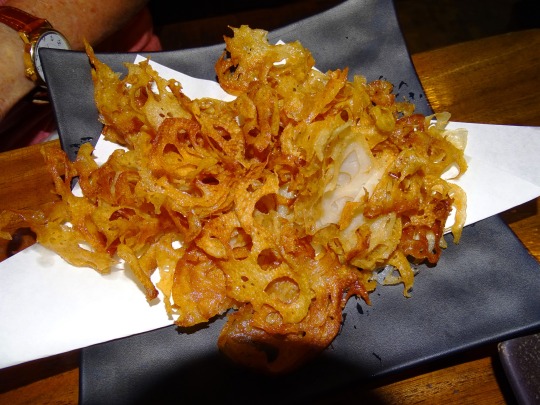

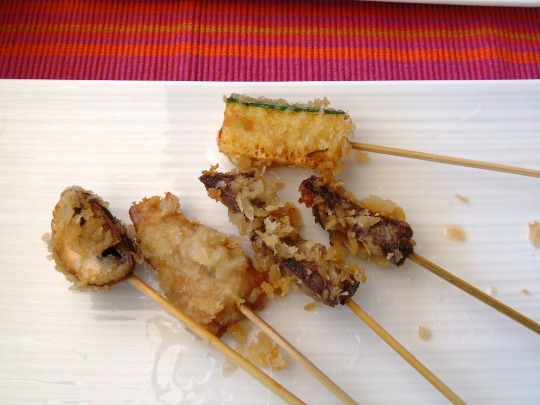


National Tempura Day
Batter and deep-fry a wide range of foods, from prawns to vegetables, and pair with Japanese staples like donburi or soba for some delicious dining.
Tempura is a deep-fried dish that the Japanese have made for centuries. When did it originate? Let us find out through the history of National Tempura Day!
Learn about National Tempura Day
On National Tempura Day, we are encouraged to enjoy any sort of dish that has been made with tempura batter. This is a Japanese fare, with most people tucking into delicious Tempura prawns on this date! However, there are many things you can deep-fry in this batter. Seafood and vegetables are the most popular, yet there’s nothing stopping you from having Tempura chicken. We are sure that there are plenty of unique concoctions you can come up with as well. Deep-fried Mars bars are popular, so what about a Tempura version?
Tempura is a traditional Japanese dish. It was introduced in the 16th century by the Portuguese that were living in Nagasaki at the time. They used fritter-cooking to achieve the light batter. The batter typically consists of soft wheat flour, for example, all-purpose flour, pastry flour, or cake flour, which is combined with iced water. Some people prefer to use sparkling water to keep the batter light.
A lot of people will also add spices, oil, starch, baking powder or baking soda, and/or eggs, especially the egg yolk. Traditionally, this batter is mixed in small batches. Chopsticks are used to mix the batter, and it is only mixed minimally, i.e. for a few seconds. Any lumps are left in the mixture, and this – along with the cold temperature – is how the crisp and unique fluffy tempura structure is created when cooking.
Cooked tempura pieces tend to be either salted and eaten as they are or they are presented with a dipping sauce. Tentsuyu sauce is the most common sauce to enjoy with this batter. A lot of people serve it with grated daikon, which is a mild-flavored winter radish, and they eat it straight after it has been fried. You will also find that tempura is typically found in udon soup or bowls of soba in Japan, typically in the form of a fritter, shiso leaf, or shrimp.
It is also not uncommon for tempura to be used in combination with other foods. So, if you want to cook a tempura-inspired meal for National Tempura Day, there are plenty of main dishes for you to consider. As mentioned, you can add tempura to the top of udon soup. It is also typically served as part of a donburi dish, which is where vegetables and tempura shrimp are served over a bowl of steamed rice. You could also make a bowl of tempura soba, which is essentially tempura that is served on top of buckwheat noodles. Or, how about making your very own creation?
History of National Tempura Day
Tempura is made up of either seafood or vegetables that are battered, deep-fried, and enjoyed by millions of people across the nation. Portuguese Jesuit missionaries introduced the recipe for tempura to Japan during the sixteenth century (around 1549). It is believed that Portuguese Jesuit Tokugawa Isyasu, founder and first shogun of the Tokugawa shogunate of Japan, loved tempura. Since the Genroku era (September 1688 – March 1704) tempura was originally a very popular food that was eaten at street vendors called yatai.
Today, chefs all over the world include tempura dishes on their menus using a wide variety of different batters and ingredients including the non-traditional broccoli, zucchini, and asparagus as well as dry fruits. Some meats, usually chicken and cheeses, are known to be served tempura-style in some American restaurants. For sushi lovers, a more recent variation of tempura sushi has the entire piece of sushi dipped in batter and tempura-fried. The word “tempura” comes from the word “tempora”, a Latin word meaning “times”, “time period” used by both Spanish and Portuguese missionaries to refer to the Lenten period or Ember Days.
The idea that the word “tempura” may have been derived from the Portuguese noun tempero, meaning a condiment or seasoning of any kind, or from the verb temperar, meaning “to season” has not been substantiated. The term “tempura” is thought to have gained popularity in southern Japan; it became widely used to refer to any sort of food prepared using hot oil, including some already existing Japanese foods. Today, the word “tempura” is also commonly used to refer to satsuma age, a fried fish cake that is made without batter. In Bangladesh, the blossoms of pumpkins or marrows are often deep-fried with a gram of rice flour spice mix, creating a Bengali style tempura known as kumro ful bhaja.
How to celebrate National Tempura Day
Celebrating National Tempura Day is easy. You gather up the ingredients necessary to create a tempura, be it a homemade recipe or one you found online, and make the dish to serve it with family as a happy dinner meal. You could decide to have tempura prawns or starter or you could opt for a main dish that incorporates tempura, such as the ones we mentioned earlier.
The great thing about this batter is that it is highly versatile and so it can be teamed with a wide range of seafood, vegetables, and meat. This means that you can have a lot of fun experimenting with different ingredients. Why not have a tempura cook-off with your friends? Or, you could host a Japanese-inspired dinner party?
Why not get some of your friends around for afternoon tea Japanese style? In Japan, tea ceremonies have been popular for many years. Combine this with some delicious tempura dishes for everyone to eat, and you’ve got the perfect lunch-time event. After all, it is always fun to do something a bit different, isn’t it?
The tea that is famous in Japan is pure Matcha green tea. We’re sure you may have even seen Matcha tea or Matcha lattes in your local coffee shop! Matcha comes in many different forms and grades. It is important to be aware of this when purchasing, as you don’t want to end up selecting the wrong product. Generally speaking, you have two key options to select from when buying Matcha – ceremonial Matcha and cooking grade Matchas.
Most people prefer to invest in ceremonial Matcha green tea, and this is because it is of the highest quality and it is suitable for everyday drinking. Of course, you can incorporate it into cooking too, but when creating a Matcha beverage it is even more important to choose high levels of quality. You won’t get better than ceremonial Matcha and this is emphasised by the fact that this Matcha is used in the traditional Japanese tea ceremonies. This type of Matcha should be powdery, very fine, and boast a bright spring green shade.
If it has a slightly yellow colour and feels coarse, you definitely do not have ceremonial grade Matcha on your hands. Ceremonial Matcha is also delicious enough to be enjoyed on its own. You can simply mix it with hot water and consume it as it is; it does not need any sweeteners or additions. Another point worth bearing in mind is that you only need about half a teaspoon of ceremonial grade Matcha when making a cup of tea. You will need more than this when using a lower grade of Matcha. Therefore, while ceremonial Matcha may be more expensive to buy initially, it will last you a lot longer, and thus the costs even themselves out.
No matter whether you are going to host a traditional Japanese tea ceremony with your friends or an evening of fine dining, you will need to decide what tempura dishes you are going to create. The great news is that there are so many different options for you to choose from!
Let’s go through some of the most popular. If you’re looking for a veggie dish, eggplant tempura is a great choice. This is known as Nasu. Or, how about Ebi? This is shrimp tempura, and it is delicious! It is typically used as a topping for udon or soba noodles, yet it can also be enjoyed on its own. Don’t confuse this with Ebi Furai; this is another type of fish, yet it is deep fried with panko batter, which is a lot heavier.
Some other options include tempura shiitake mushrooms, Ika, which is squid tempura, and Hotate, which is tempura scallops. If you are feeling really adventurous, you may want to consider Anago, which is salt-water eel. They have a sweet taste and a soft texture.
Source
#Lotus Root Chips#Tempura Fried Green Beans#Brix Restaurant & Gardens#California#Toronto#Deep Fried Garlic and Beef#Yountville#signature dish#appetizer#USA#Canada#original photography#Ginger Fried Chicken#National Tempura Day#7 Janaury#NationalTempuraDay#food#travel#vacation#national day#restaurant#homemade#Don Don Izakaya#two of my favorite restaurants#7 January
1 note
·
View note
Text
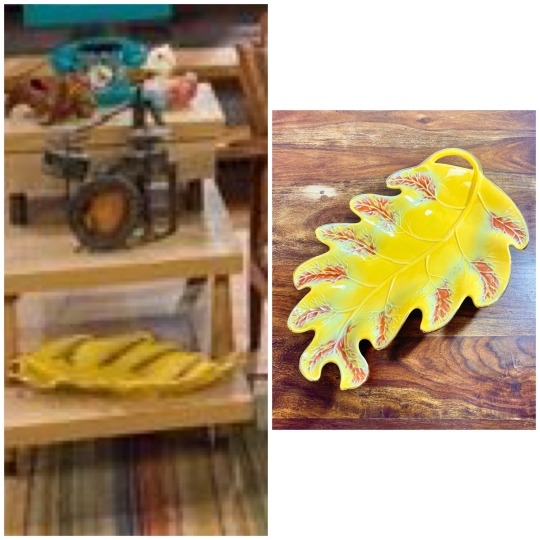
Seen on iCarly in the living room since episode one
Vintage California Pottery yellow ceramic leaf dish
1 note
·
View note
Text
youtube
Watch the American Climate Leadership Awards 2024 now: https://youtu.be/bWiW4Rp8vF0?feature=shared
The American Climate Leadership Awards 2024 broadcast recording is now available on ecoAmerica's YouTube channel for viewers to be inspired by active climate leaders. Watch to find out which finalist received the $50,000 grand prize! Hosted by Vanessa Hauc and featuring Bill McKibben and Katharine Hayhoe!
#ACLA24#ACLA24Leaders#youtube#youtube video#climate leaders#climate solutions#climate action#climate and environment#climate#climate change#climate and health#climate blog#climate justice#climate news#weather and climate#environmental news#environment#environmental awareness#environment and health#environmental#environmental issues#environmental justice#environment protection#environmental health#Youtube
17K notes
·
View notes